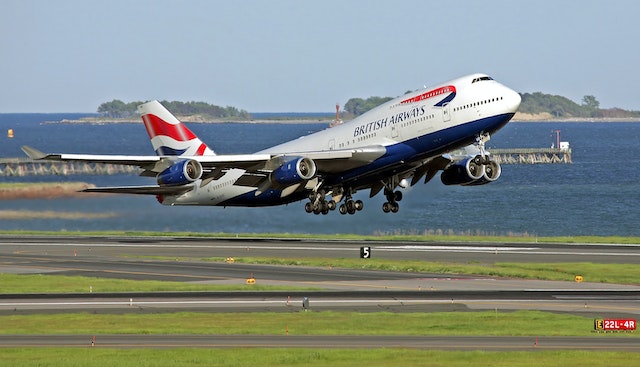
How long does a 747’s runway need to be? A Boeing 747 airplane needs a runway that is at least 2,300 m long to land and over 3000 m to take off.
However, this is a difficult question because there are many variables that come into play when determining the necessary length of runway for a plane. The type of airplane, the weight of the airplane, the slope of the runway, the surface of the runway, the altitude of the runway, the climate, the temperature, and the runway’s condition.
The 747 was the most popular passenger airplane in the world for many years, but Boeing discontinued production of the aircraft in 2020 and the last 747 rolled off the production line on October 6th, 2022. The idea for the 747 was conceived in the early 1960s. Boeing’s first passenger jet, the 707, was popular but the number of passengers was increasing year by year and there weren’t enough planes. Boeing realized there was a market for a much larger plane. It took almost a decade of design and testing, but the first 747 went into service in 1970. Pilots had to get used to navigating airports from a much higher cockpit and evacuation methods had to be updated. Many people thought airports wouldn’t be able to accommodate the new planes, but with some adjustments there were no problems. And the 747 ushered in the age of long-distance international travel.
So, how long does a 747’s runway need to be? Let’s look at all of the variables.
The type of airplane. There are 21 different models of the 747. The first model was the 747-100. The last model was the 747-8F. There is a 35 year gap between these two models and the 8F had increased engine power, and was more economical, meaning it should have been able to take off and land on a shorter runway, but it had an increased cargo capacity of 154 tons and was 6 meters longer, which made the change negligible.
The weight of the airplane. Every airplane has a maximum take off and land weight. This weight is the weight of the plane plus passengers plus cargo plus fuel. The 747-8F has a maximum takeoff weight of 448 tons. That is the 210 tons for the aircraft, 76 tons of passengers and cargo, and 162 tons of fuel. It is interesting that the fuel is far heavier than the cargo the plane can carry. Obviously, the heavier the plane, the longer the runway it requires because it takes longer to get up to speed.
The slope of the runway. An inclined runway will increase the distance the plane needs to take off because it will have a harder job reaching takeoff speed. Courchevel airport in the French Alps has an incline of 18.5%. Conversely, if the runway is declined, the plane will need less distance to get airborne.
The surface of the runway and the runway’s condition. Friction on the wheels is a factor in how quickly the aircraft can reach takeoff speed. Planes can grip a well-maintained asphalt runway better than a concrete runway, which means they can accelerate more quickly. Concrete cracks easily, and cracks cause the plane to bounce, lowering its grip.
The altitude of the runway. This is extremely important in calculating runway length. Air is less dense higher up than it is at sea level so, if the runway is high above sea level, the plane will need a longer runway. When the air is less dense, the amount of air that circulates through the engine drops. This means the thrust is reduced and the plane needs more time to reach takeoff speed. Also, low density air means there is less lift on the wings. The highest commercial airport in the world is Daochen Yading Airport in China. It is 4,411 meters above sea level.
The climate and the temperature. Cold air is denser than warm air because it has less energy. As the temperature rises, the air density drops, causing the same problems with lift and thrust as at altitude. A headwind or a tailwind can also change the distance needed. A strong headwind will increase the lift on the plane’s wings at lower speeds, decreasing the necessary length of the runway.
Pilots have to calculate all of these things when working out if a runway will be long enough or not. Landing distances also take all of these things into consideration, but the strength of the plane’s airbrakes are a huge factor. Modern planes are able to stop more quickly. Landing planes also have a maximum landing weight, which is why planes dump fuel before landing in an emergency.
Because of efficiency, climate change, and a host of other reasons, large passenger jets like the 747 are being replaced by smaller, more efficient jets. The day of the electric plane may be here soon.
So, ideally, a plane would take off at sea-level, on a cold day, and into a strong headwind. Before pilots take off, they must input all of this information into their onboard computers, which will tell them the length of takeoff they need. If they make a mistake, the consequences can be disastrous. With perfect conditions, large aircraft can take off on runways that appear far too short.
Sources
https://simpleflying.com/boeing-747-shortest-runway-landing/
https://travelonthefly.com/minimum-runway-length-boeing-747/
https://en.wikipedia.org/wiki/Boeing_747
